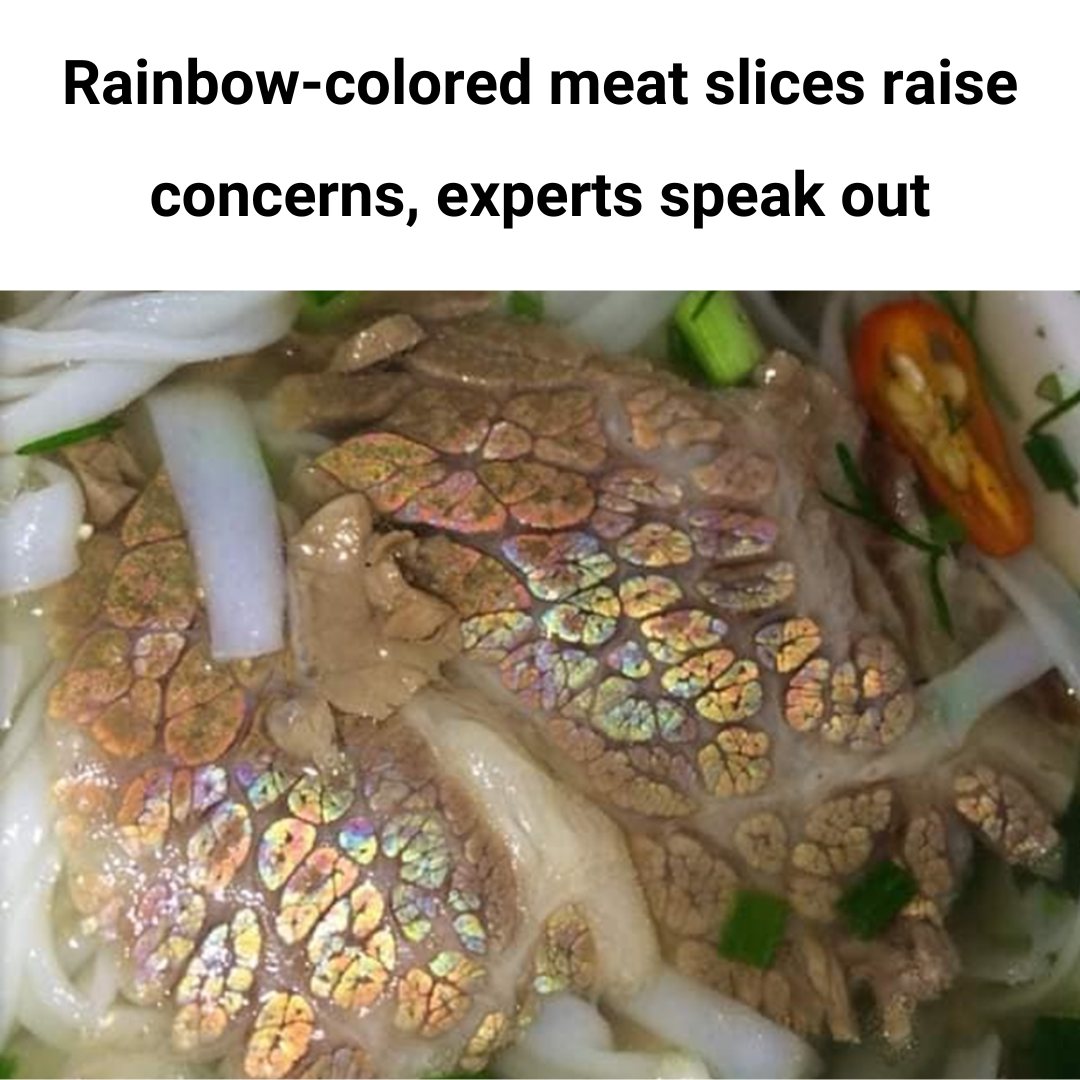Have you ever sliced into a piece of meat and noticed a shimmering, rainbow-like hue on its surface? If so, you might have wondered if something was amiss. Is the meat spoiled? Is it contaminated with metal? As it turns out, there’s a simple scientific explanation behind this phenomenon.
The rainbow effect on meat is a result of light refraction. When light interacts with the meat’s surface, particularly with its proteins, fat, and iron content, it bends and scatters, creating a prism-like effect. This scattering of light results in the iridescent colors you sometimes see.
Dr. Thomas Powell, Executive Director of the American Meat Science Association, explains that this effect is most noticeable when meat is sliced thinly against the grain. The way the light interacts with the exposed muscle fibers and moisture enhances this glossy, almost reflective appearance.
This phenomenon isn’t exclusive to beef; it can also be observed in pork, fish, bacon, and ham. According to the U.S. Department of Agriculture (USDA), this visual effect is completely natural and is simply a result of light reflecting off certain components in the meat, especially in the presence of moisture or heat.
So, is meat with a rainbow hue safe to eat? The good news is that it is perfectly safe to eat as long as there are no other signs of spoilage. The USDA confirms that this optical effect has nothing to do with contamination, bacteria, or spoilage.
To ensure your meat is fresh and safe, it’s always a good idea to check for other indicators before cooking. Look for any unusual smells, slimy textures, or discoloration. If your meat passes these basic freshness tests, you can safely cook and enjoy it without worry.
The rainbow effect is more commonly observed in processed meats like ham, roast beef, and cured pork products. This is because these meats are often sliced very thinly, allowing more light to interact with their surface and increasing the likelihood of the prismatic effect.
If you’re looking to choose the freshest, highest-quality meat, here are some helpful shopping tips: look at the color, check the smell, feel the texture, inspect the packaging, and pay attention to sell-by dates.
While the iridescent sheen on meat is harmless, some people prefer to minimize it for aesthetic reasons. If you’d rather not see a rainbow on your steak or roast beef, try storing meat properly, cutting it differently, and cooking with care.
In conclusion, the rainbow hues that sometimes appear on sliced meat are nothing more than a fascinating optical effect caused by light refraction interacting with the meat’s proteins, iron, and fat. So, the next time you see a shimmering, iridescent sheen on your roast beef or pork chops, take a moment to appreciate the simple yet intriguing science behind this natural phenomenon.


